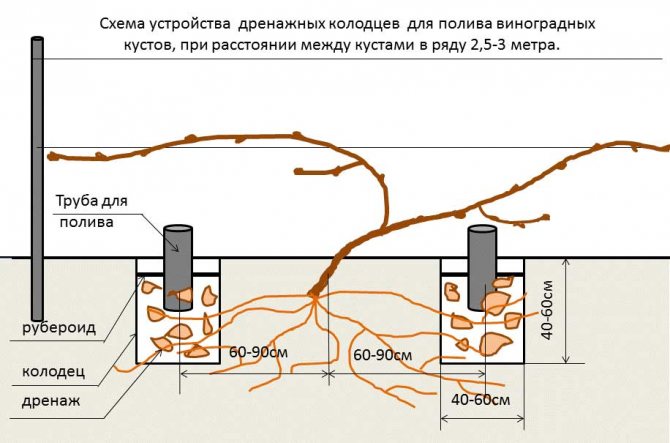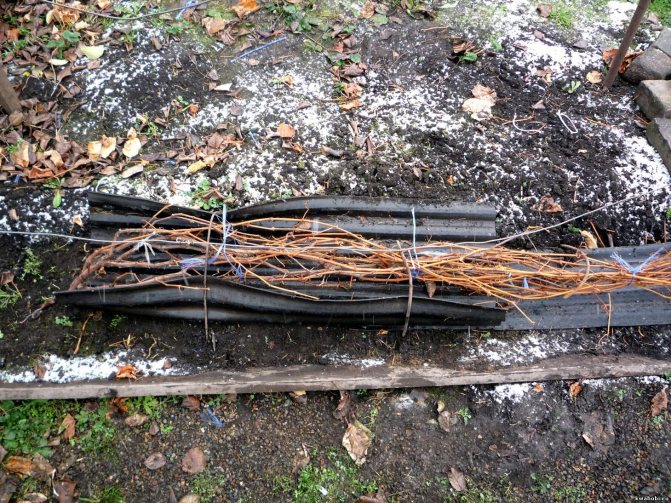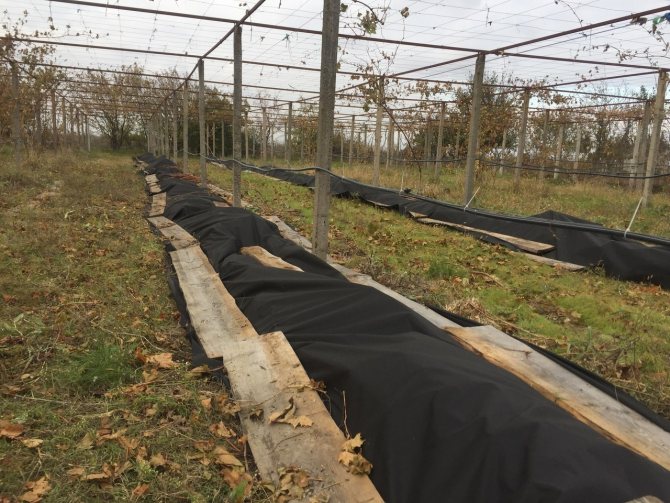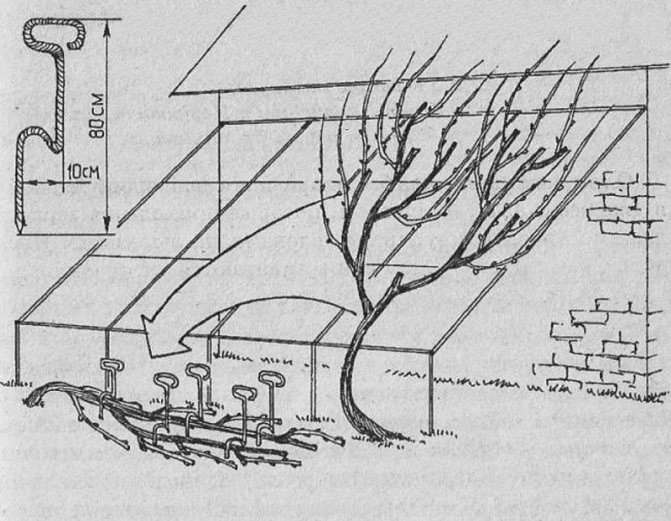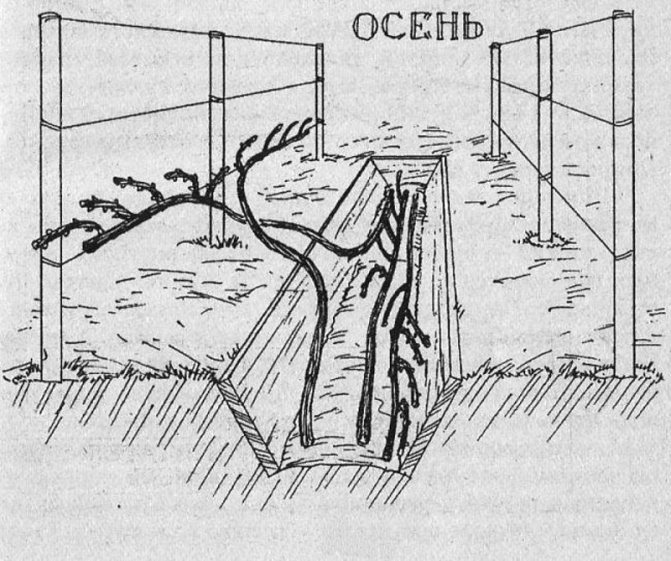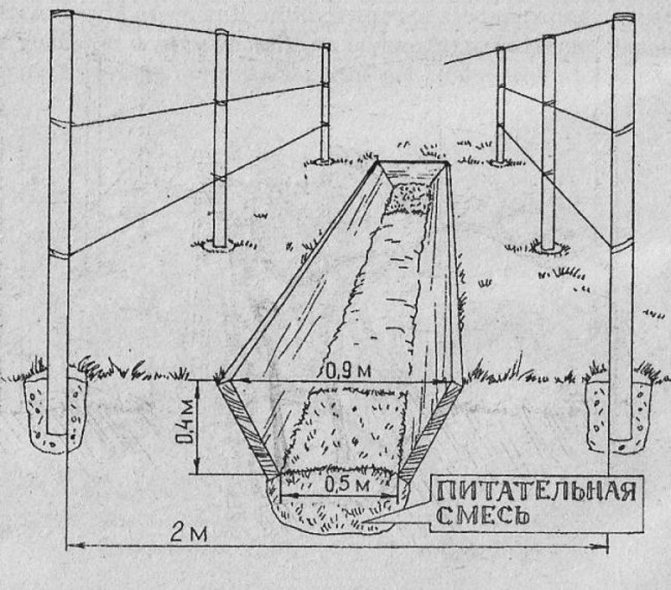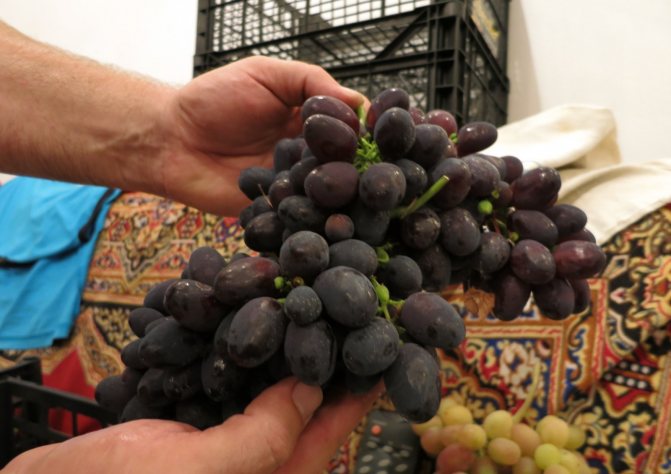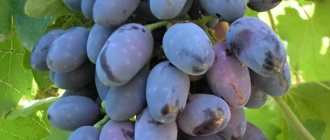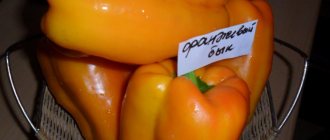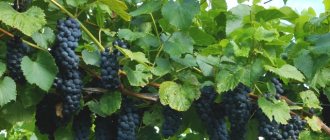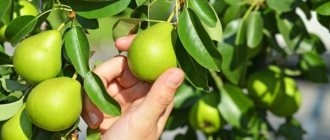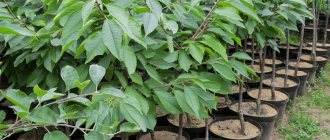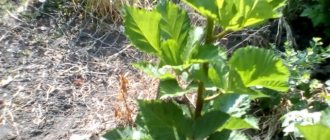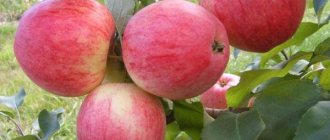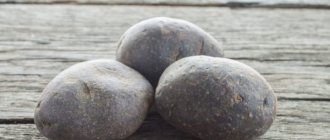Table of characteristics of the variety Zabava
| General information about the variety Zabava | |
| Parent Couple Fun | Laura x Codryanka |
| The author of the variety: | Amateur selection V.V. Zagorulko, Ukraine |
| Main Features Fun | |
| Purpose: | dining room |
| Ripening time: | early |
| Productivity: | high |
| Taste: | sweet and sour, juicy, without bitterness |
| Color: | dark blue |
| Frost resistance: | up to - 21 ° C |
| Description of a bunch of grapes | |
| Bunch weight: | 600-1000 gr. |
| Density of the bunch: | medium density |
| Description of grape berries | |
| Berry shape: | elongated |
| Berry weight | 10-11 gr. |
| Diseases | |
| Disease resistance: | Resistance to mildew - 3.5 points, oidium - 3.0 points. |
Grapes are one of the oldest fruits on planet Earth. Its juiciness, pleasant taste and incredible benefits have won over many people from around the world. Even in the works of ancient scientists, this fruit was mentioned as a medicine for various ailments. And of course, would there be wine - the most beautiful drink celebrated in the Middle East, if there were no grapes? Today we will talk about one of the grape varieties - Zabava.
Botanical description of the variety
The growing season for the Zabava grape variety lasts about 100-110 days. This classifies the form as very early, in terms of ripening time. The grapes are fully ready for harvest, usually in late July and early August. However, this form hangs without problems on the bushes for up to 3-4 weeks. "Black Laura" can hang without a tendency to disease and cracking until the beginning of September. At the same time, the grapes gain more color, which becomes even blacker, and the aroma of cherries and plums begins to be felt intensely in the taste.
The vines are above average, growing up to 5 meters per season. The shoots are intensively stretched and there are always many stepsons on them. Ripening of vines for the season is about 80-85%. Cuttings have good rooting power.
When pruning vines, about 40-50 buds are left. This hybrid loves medium pruning of vines. But with a short cut it feels great too. Clusters develop from 3-4 buds.
Frost resistance:
The big advantage of the Zabava hybrid is its stability and winter hardiness. The hybrid form has an increased frost resistance of -21-22 ° C. But zealous owners shelter him for the winter, even in the southern regions, in order to increase the chances of a good preservation of all central fruit buds and improve the yields of the next year.
Flowering type:
By the nature of flowering, "Fun" refers to bisexual forms of grapes. He never peas and is prone to compaction of bunches. In years with normal early spring periods, vines bloom in early June.
Productivity:
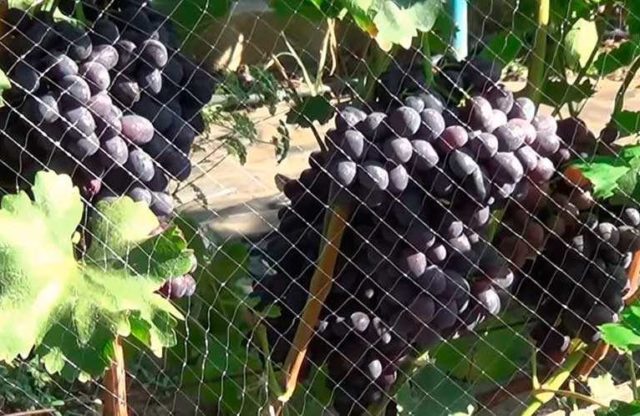
Zabava is declared as a table grape variety, but its taste makes it possible to make excellent juices and wines from it. The yield of this table grape is within the average range. One adult bush brings about 25-30 kilograms of harvest. However, according to the test results, many farms began to cultivate "Black Laura" and receive up to 150 centners of the crop per hectare.
Characteristics of bunches:
Bunches "Zabava" of the correct conical shape with two neat "wings". They are not friable, the density of berries in bunches is medium and high, but the berries are not deformed. A bunch by weight is from 600 to 1000 grams.Bunches of these grapes become very large when rationing shoots and clusters. In these cases, a bunch of grapes "Black Loraa" can reach 2.0-2.5 kilograms in weight and 45 cm in length.
Characteristics of berries:
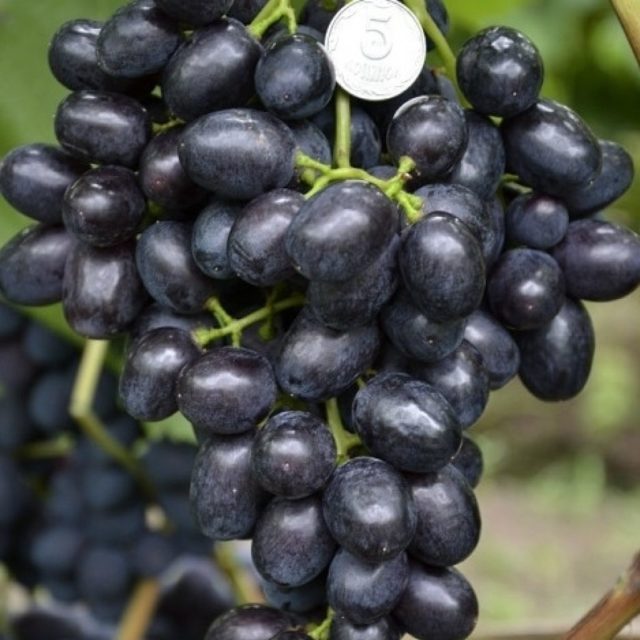

The grapes of this variety are large, reach 32-35 in length and 20-23 mm in width. The weight of the berries is 7-11 grams. When ripe, the color changes from dark purple to black. Inside, the berries have a juicy, but dense, sugary pulp. The taste is very good, harmonious and unusual. When the berry is fully ripe, it has a plum or ripe cherry aroma in its taste.
The balance of sugars to acids becomes optimal at the end of July, and at the beginning of August, when the grapes are fully ripe, they improve. Sugar accumulation - 18-20%, acid content - 6-8%. Tasting score - 8.0 points.
Gardeners reviews
Gardeners from central Russia and the South speak positively of grapes. A big disadvantage for winegrowers in the middle zone is the low threshold of frost resistance, but other positive qualities completely cover this negative side. To prevent grapes from getting sick, gardeners recommend spraying plants twice in the spring. Most use copper-containing products. The first time spraying is carried out when the buds have not yet blossomed, and the second time, when the leaves have already blossomed.
Disease resistance of grapes and transportable properties:
The Zabava hybrid is characterized by high resistance to vine diseases. The incidence of mildew, gray rot and powdery mildew can be prevented on these bushes by using only biological preparations (Colloidal sulfur, Fitosporin M, etc.) and fertilizers, as well as the correct approach to irrigation and agricultural technology.
The biggest disadvantage of this variety is that it is severely affected by wasps.
The Black Laura tolerates transportation very well over long distances. This is possible due to the fact that the berries are firmly adhered to the comb and are not prone to cracking. The transportability of the bunches is high.
Features of planting and growing grapes
Despite the high probability of success in breeding grapes of this variety, this procedure requires compliance with certain rules when planting and caring for the plant. It is worth carefully choosing a cutting, and then preparing it.
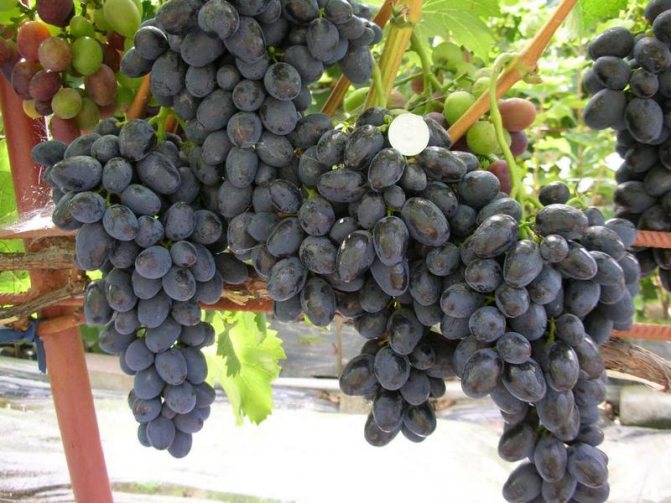

Fun
Landing dates
Amusement can be planted both in autumn and spring, but the region of residence should be taken into account. If the winters are warm enough, then the seedlings can be planted in the autumn - they will have time to take root. At the same time, it is worth monitoring their quality: they should ripen well at this moment, have brown thick shoots, as well as healthy roots.
Table of general characteristics of the variety
| Variety | "Fun", "Black Laura" |
| Frost resistance | -21-22 ′ С |
| Disease resistance | disease resistance high |
| Peeling | not |
| Sugar content | high, more than 18-20% |
| scent | harmonious taste, aroma of cherry or plum |
| Raw materials for wine | yes it is possible |
| Eating raw | Yes |
| Transportable properties | high transportability |
| Capriciousness to the land | Fertile sandy chernozem soils |
| Yield | 25-30 kg per bush, about 150 kg / ha. |
| Color | The berries are covered with pruin and have a deep black color. |
| Berry size | About 25 mm long and 22 mm wide |
| Shape / Weight of berries | The weight of each grape berry is 6-9 grams. The shape of the berries is oval. |
Districts and features of cultivation
The variety is intended for cultivation in countries such as Ukraine, Belarus, Russia. Due to certain properties, reproduction does not cause problems even in Siberia and the Urals, this grape grows well even in the Moscow region.
For reference! The plant prefers soil with a high content of chernozem, but it can also bear fruit in another substrate.
Young seedlings can be planted both in autumn and spring. Success depends on the rooting conditions and the quality of the seedling. If the roots are intact, and the shoot has a length of 15 cm or more, you do not have to worry about the success of the planned event.
Pros of the Zabava grape variety
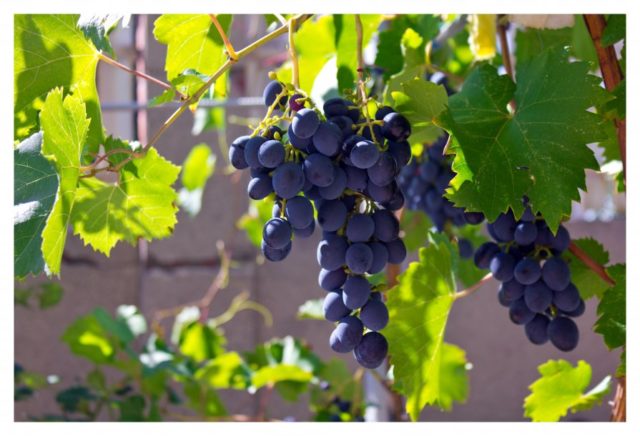

Let's highlight the positive characteristics of the Black Laura variety:
- The hybrid form of grapes "Zabava" is a black grape variety resistant to the main diseases of the vine.
- Black Laura grapes are unpretentious and adapt to any region of cultivation without losing their best varietal qualities.
- Easily propagated by cuttings and cuttings that root well. Own-rooted bushes give a harvest the next year after planting.
- Excellent vine maturation.
- Responsive to fertilizers and watering.
- Stable annual productivity "Zabava".
- Increased winter hardiness.
- Excellent taste and marketability.
- Long-term storage and good transportability.
Breeding varieties, how and when you can do
This variety propagates in two ways: by layering and cuttings. In the first case, it is recommended to reproduce in late spring or summer, since the roots will have time to germinate by autumn. The second option is possible for planting in individual containers in spring or autumn.
In the fall, it is required to cut lignified cuttings by choosing a straight segment of 14 cm on the branch. It is recommended to make notches on the lower part, so that later it is clear which side to plant. Fold the cuttings in plastic and send to a dry, cold place.
At the beginning of spring, it is worth starting rooting according to the following algorithm:
- Make a cut at the bottom of the cutting and soak for 2 days.
- Prepare individual containers up to 20 cm deep and with the same diameter. Mix a substrate of humus, turf, sand and sawdust (1.5: 1: 0.5: 1), pour over it with a solution of ammonium nitrate and superphosphate.
- Plant the cuttings so that there are 2 eyes above the surface.
- Place the containers in the greenhouse and cover each stalk with glass.
- Spray until shoots appear daily.
Important! To harden the cuttings, you need to begin to take them out into fresh air before direct planting.
It is required to plant a plant in a permanent place when the soil warms up to 10 degrees.


Grape cuttings
Sapling planting technology
Grape seedlings can be planted in different ways: in pits, in trenches. Planting method depends on the size of the site, the number of plants.


Landing options
Landing in the pits
The hole is dug so deep that the roots are located at a distance of 0.5 m from the surface. The seedling is placed at an angle, leaving one bud on the surface, and covered with earth mixed with 1-2 buckets of humus. On heavy soils, you need to deepen the root to a shorter distance.
Important! Unripe manure cannot be applied under the grapes.
.
Landing in trenches
Trenches are dug in a conical shape - the width in the upper part is 1m, in the lower part - 50cm, depth - 40cm. The inclined walls are covered with boards, slate. Landing pits are dug at the bottom of the trench so that the roots are deepened by 30 cm. Landing in trenches is justified wherever shelter is required for the winter - it is convenient to place the whips in the trench and close it from above.
Planting in rows
- the rows should be located from north to south at a distance of 2.5-3m from each other;
- dig holes 0.8-1m deep and 0.6-1m in diameter at intervals of 2 meters;
- put drainage on the bottom of the pit: brick chips, crushed stone;
- add 200 g of superphosphate, a little humus, compost, ash, ammonium sulfate to each well;
- cover a layer of fertilizers with earth, sprinkle with water and leave it open for wintering;
- in spring, when planting, the seedling is covered with earth with a small amount of humus and compost.
The soil is covered with mulch (sawdust, hay, bird droppings) after planting, after the summer and autumn preparation of the site - mulch helps to increase the amount of nutrients in the soil when it overheats, prevents the soil from drying out and reduces the amount of weeds.
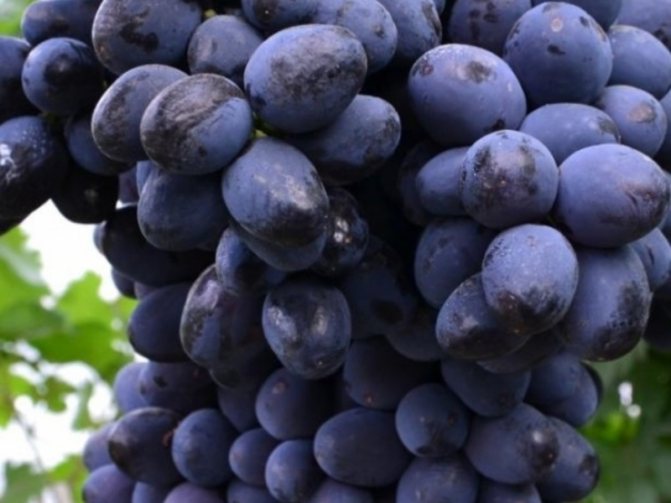

Harmful insects
The vineyard attracts hordes of pests, in total there are about 800 species of them in the world. Insects affect literally all parts of the plant, some of them are capable of destroying the entire crop.
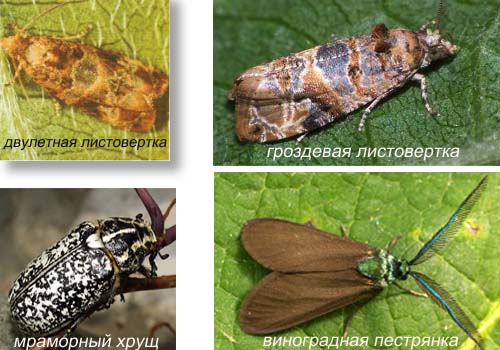

The most dangerous and widespread are numerous ticks.
Attention! Harmful insects are capable of giving up to 12 generations during the season.
To minimize the risk of crop losses from ticks and other pests, spray the plants with insecticides and acaricides, while paying attention to the underside of the leaves.
Popular among winegrowers are the following remedies: Actellik, Neoron, Fufanon and others.
One of the distinctive characteristics of "Fun" is the large, up to 0.8 kg, weight of the bunches. Because of this, the branches can be exposed to significant overloads, which ultimately will lead to negative consequences. Therefore, the load on the vines must be regulated.


Weak shoots are cut unambiguously. Fruit branches are cut at the level of the 6th or 8th eye. It is necessary that the load on one plant does not exceed 45-50 eyes.
Pruning should be done in early spring, until the active movement of juices begins.
A one-year-old seedling is shortened annually, and with each pruning, more eyes are left on it. The number of side branches of "Fun" should exceed the number 4, this will be the key to a good yield of the bush.
Technical characteristics of berries


Table variety. Zabava's berries weigh on average about 10 g, oval-elongated. Ripe berries become dark blue, almost black, in color, but visually seem lighter due to the presence of an abundant waxy bloom on the skin.
The berries themselves grow quite large: their sizes can vary from 32 to 35 mm in length and 20-22 mm in width. Their skin is thin, chews well and is practically not felt when eating. Ripening berries are characterized by a slow but stable set of sugar.
The pulp of the berries is very dense, juicy, crunchy when eaten, with a subtle refreshing sourness. Due to the dense pulp, the berries very rarely crack and, despite their thin skin, are distinguished by good transportability - they can be transported over long distances without any problems.


